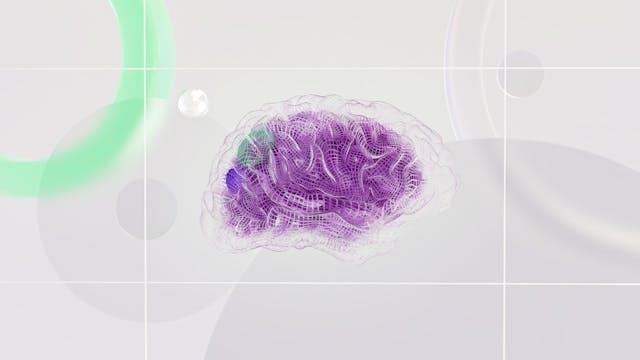The Amazing Plasticity of the Brain
Neuroplasticity, the brain's remarkable ability to reorganize itself by forming new neural connections throughout life, is one of neuroscience's key insights. This phenomenon implies that the brain is a dynamic and adaptable organ rather than a static one and has far-reaching implications for education, implying that people of all ages can continue to learn and adapt.
It is especially visible during critical developmental stages such as childhood and adolescence. Environmental stimuli, experiences, and learning activities can all influence the structure and function of the brain. Understanding the principles of neuroplasticity enables educators to tailor instructional methods to take advantage of the brain's capacity for change, thereby improving learning outcomes for students of all ages.
Memory and Learning: A Look at the Hippocampus
Memory is the foundation of learning, and the hippocampus, a seahorse-shaped structure deep within the brain, plays an important role in this process. The hippocampus is linked to memory formation and consolidation, particularly memories related to spatial navigation and declarative information such as facts and events.
Learning and memory retention can be improved by using educational strategies that engage the hippocampus. Incorporating hands-on activities, real-world examples, and experiential learning into lessons, for example, can stimulate the hippocampus and promote stronger memory formation. Furthermore, understanding the role of stress in memory function emphasizes the importance of creating positive and supportive learning environments with low stressors, as chronic stress can negatively impact the hippocampus and impede learning.
The Amygdala's Influence on Emotions and Learning
The amygdala, another key player in the brain's intricate network, is essential for emotion processing. Neuroscience has shed light on the complex relationship between emotions and learning, revealing that emotionally charged experiences are frequently more memorable and impactful.
Educators can harness the amygdala's influence by creating emotionally engaging learning environments and they can activate the emotional centers of the brain by incorporating storytelling, personal connections, and a supportive environment, enhancing both the learning experience and information retention. Recognizing the emotional dimension of learning emphasizes the importance of addressing students' well-being and emotional needs to create an optimal learning environment.
The Prefrontal Cortex's Role in Attention and Learning
The prefrontal cortex, also known as the executive center of the brain, is in charge of a variety of cognitive functions such as attention, decision-making, and impulse control. Understanding the prefrontal cortex's role in learning sheds light on the significance of cultivating attention and executive functions in educational settings.
Learning outcomes can be improved by educational practices that promote sustained attention and executive function skills, such as planning and organization. Mindfulness and executive function training can help to strengthen the prefrontal cortex, giving students the cognitive tools they need for effective learning. Furthermore, understanding the prefrontal cortex's developmental trajectory emphasizes the importance of age-appropriate teaching methods and expectations.
Neurotransmitters as Chemical Messengers in Learning
Neurotransmitters are chemical messengers that transmit signals between neurons, allowing for brain communication. Several neurotransmitters are important in learning and cognition. Dopamine, for example, is linked to reward and motivation, whereas acetylcholine is linked to attention and memory.
Understanding the role of neurotransmitters in learning enables educators to investigate strategies for modulating these chemical messengers to improve learning outcomes. Incorporating elements of novelty, challenge, and positive reinforcement, for example, can stimulate dopamine release, promoting a positive and motivated learning state. Recognizing the influence of neurotransmitters also emphasizes the significance of factors such as sleep, nutrition, and physical activity, as these can influence neurotransmitter function and, as a result, learning outcomes.
Opportunities and Challenges in Technology and the Brain
Technology has become an essential component of education in the digital age. Neuroscientific research reveals how technology can be used to improve learning experiences. Educational apps and interactive simulations, for example, can engage multiple brain regions, resulting in a more immersive and dynamic learning experience.
The pervasive use of technology, on the other hand, poses challenges, particularly in terms of attention span and screen time. The importance of balance is emphasized by neuroscience, which advocates for the thoughtful integration of technology into educational practices. Understanding how technology affects the brain enables educators to make informed decisions about how to use it, ensuring that it enhances rather than hinders the learning process.
Education and Teaching Practice Implications
The implications of neuroscience for education and teaching practices are vast. Educators can create learning environments that align with the brain's natural processes by incorporating neuroscientific principles into pedagogical approaches, fostering optimal conditions for student success.
- Individualized Learning: Recognizing learner diversity and neuroplasticity variability highlights the importance of individualized learning approaches. Personalized instruction can improve learning outcomes by being tailored to students' strengths, preferences, and developmental stages.
- Active and Experiential Learning: Neuroscientific findings back up the effectiveness of active and experiential learning methods. Hands-on activities, project-based learning, and real-world applications can stimulate multiple brain regions, resulting in greater understanding and memory consolidation.
- Emotional Intelligence and Well-Being: Recognizing the impact of emotions on learning highlights the importance of emotional intelligence in education. Educators who foster a positive and emotionally supportive learning environment help students achieve overall well-being and academic success.
- Considerations for Cognitive Development: Understanding the developmental trajectory of key brain regions, such as the prefrontal cortex, helps to inform age-appropriate teaching methods. Differentiating instruction based on cognitive development stages ensures that students have learning experiences that are both challenging and attainable.
- Balanced Technology Integration: Using technology in education requires a balanced approach. Educators should be mindful of screen time, encouraging activities that stimulate a variety of brain functions while minimizing potential negative effects on attention and cognition.
The nexus of neuroscience and education provides a comprehensive understanding of how the brain learns and processes information. Educators can create learning environments that align with the brain's natural capacities by incorporating neuroscientific principles into educational practices, fostering optimal conditions for student engagement, retention, and success. As our understanding of the brain evolves, so will our approach to education, opening up new avenues for improving the learning experience for students of all ages.









